Visiting the Acropolis Museum in Athens
Written by Amelia Kedge, International Training Programme Assistant
Earlier this month I visited Athens for a few days of history, culture and sunshine.
Athens has always been a ‘bucket list’ destination for me as I am fascinated by Ancient Greek mythology, so I was excited to see what wonders Greece’s capital city had to offer. One of the highlights from my trip was visiting the iconic Acropolis and the Acropolis Museum.
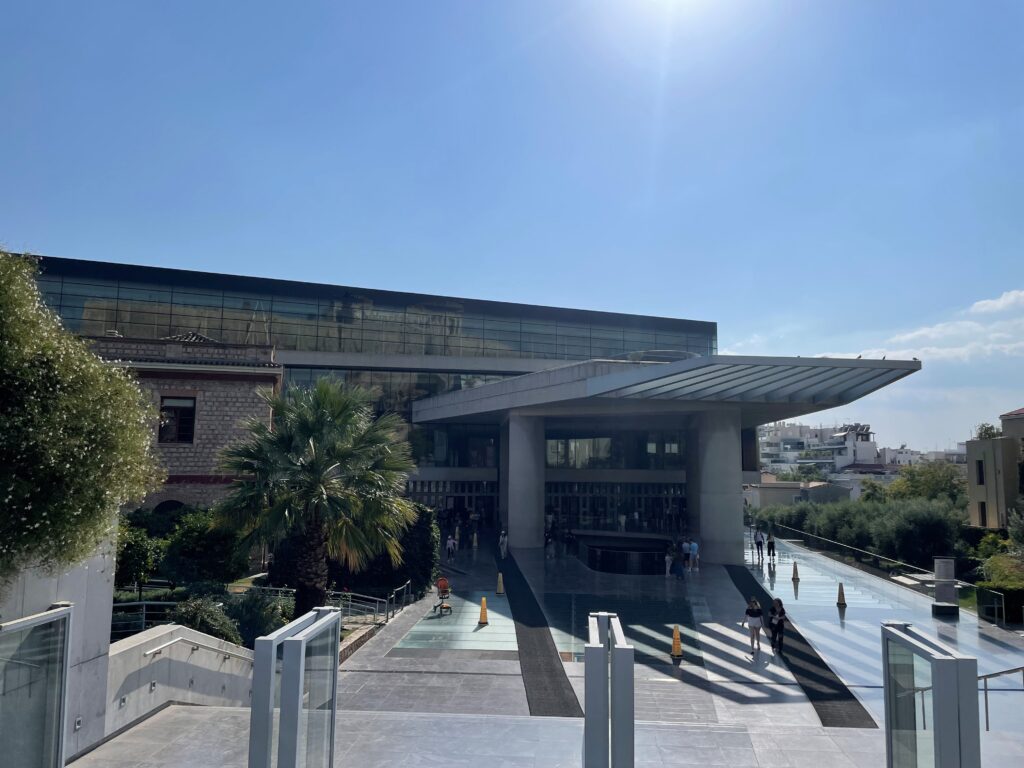
The museum was opened in 2009, located at the foot of the Acropolis slope, and tells the story of life on the Acropolis from prehistory to the end of Antiquity. The museum houses a collection of objects all found on the Acropolis site during archaeological excavations such as mosaics, amphorae, marble sculptures and friezes, including those from the Parthenon.
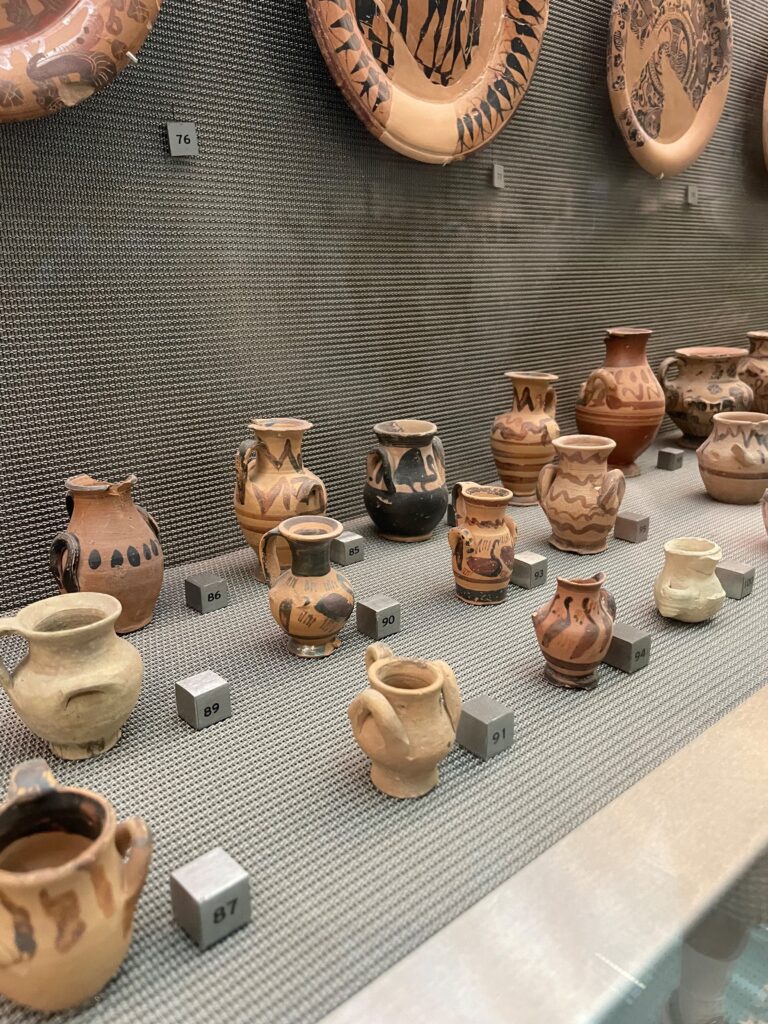
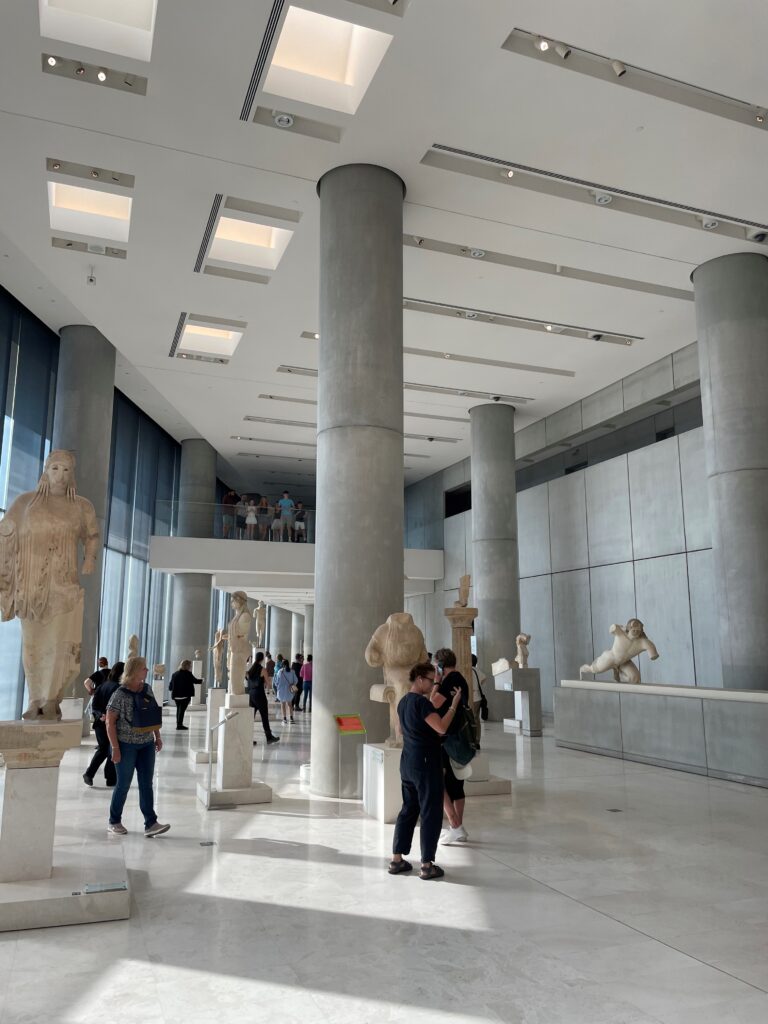
It was incredible to see the original Caryatid of Erechtheion sculptures, which in 2014 underwent a significant conservation and restoration programme to clean and preserve the exhibit using innovative laser techniques. The process was so effective, that the works were able to reveal the original tool mark traces from the hand of the maker over 2,000 years ago! The six Caryatids once supported the south porch of the Erechtheion, a temple dedicated to the gods Poseidon-Erechtheus, Hephaistos, Boutes, and the goddess Athena after whom the city of Athens is named after.
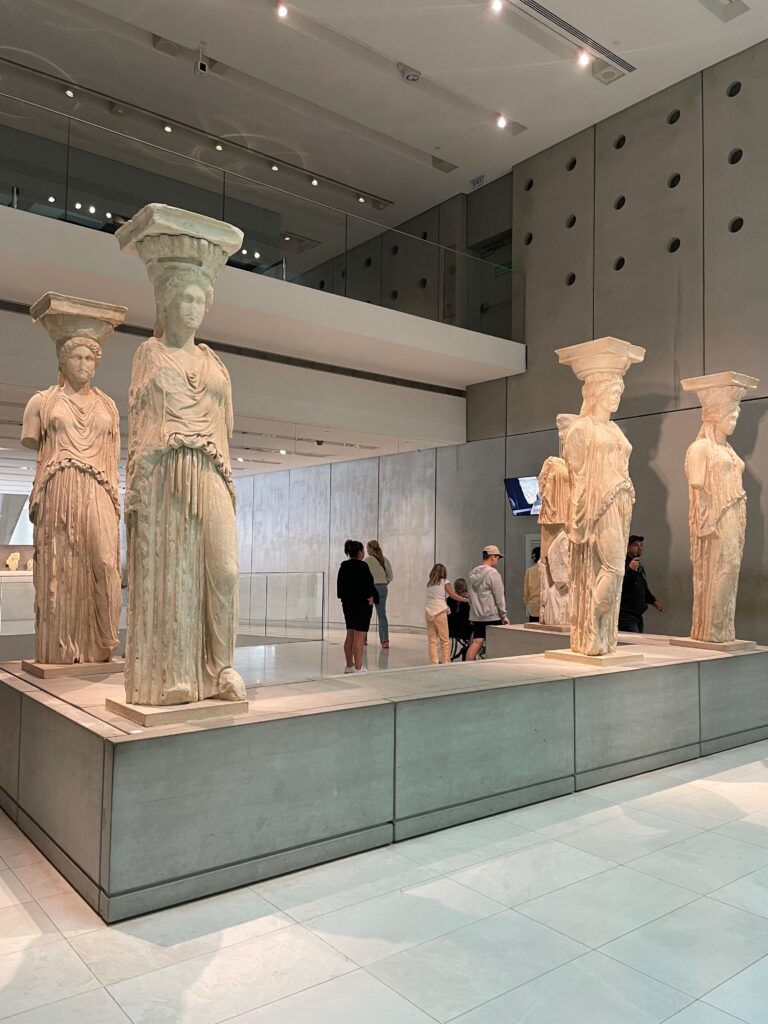
Another highlight of the museum was seeing remains of the iconic Parthenon frieze. Completed in 438BC, the Parthenon was the largest structure built on the Acropolis site and functioned as a temple to the goddess Athena Parthenos. Over the centuries the Parthenon suffered serious damage and only the basic structure still stands today. Originally the temple was adorned with sculptures and friezes depicting mythical battles and honours to the goddess Athena. Of the entire frieze that remains today, 50 metres are displayed in the Acropolis Museum, 80 metres in the British Museum, one block in the Louvre and several fragments are scattered in museums in Palermo, the Vatican, Heidelberg, Vienna and Munich.
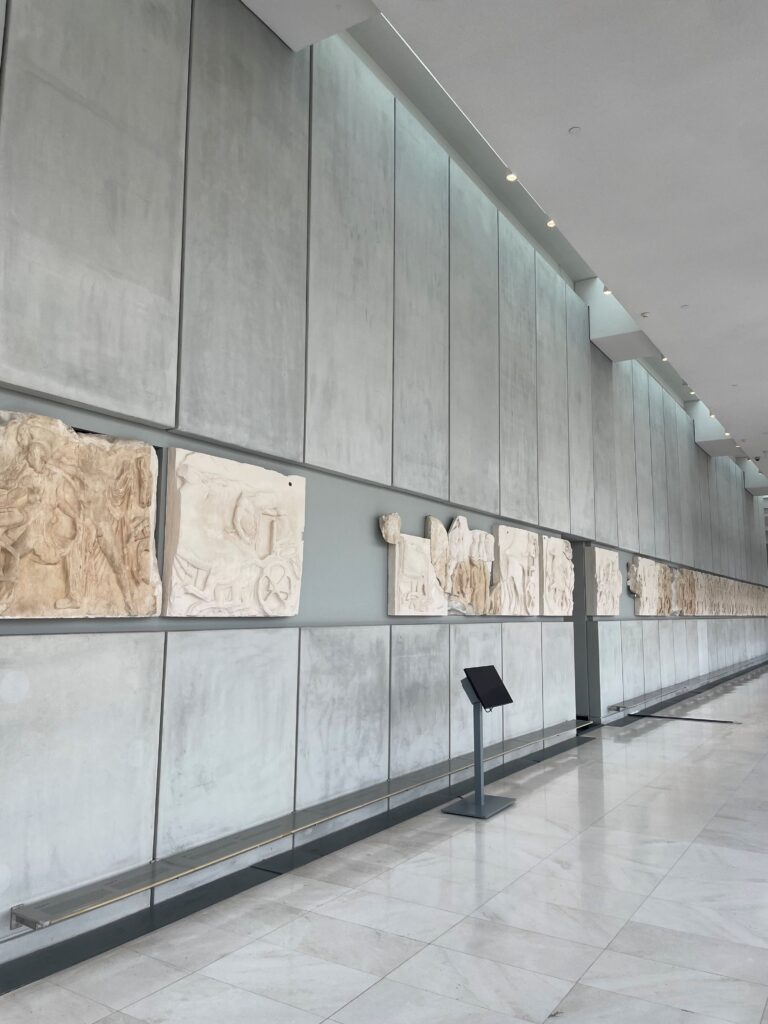
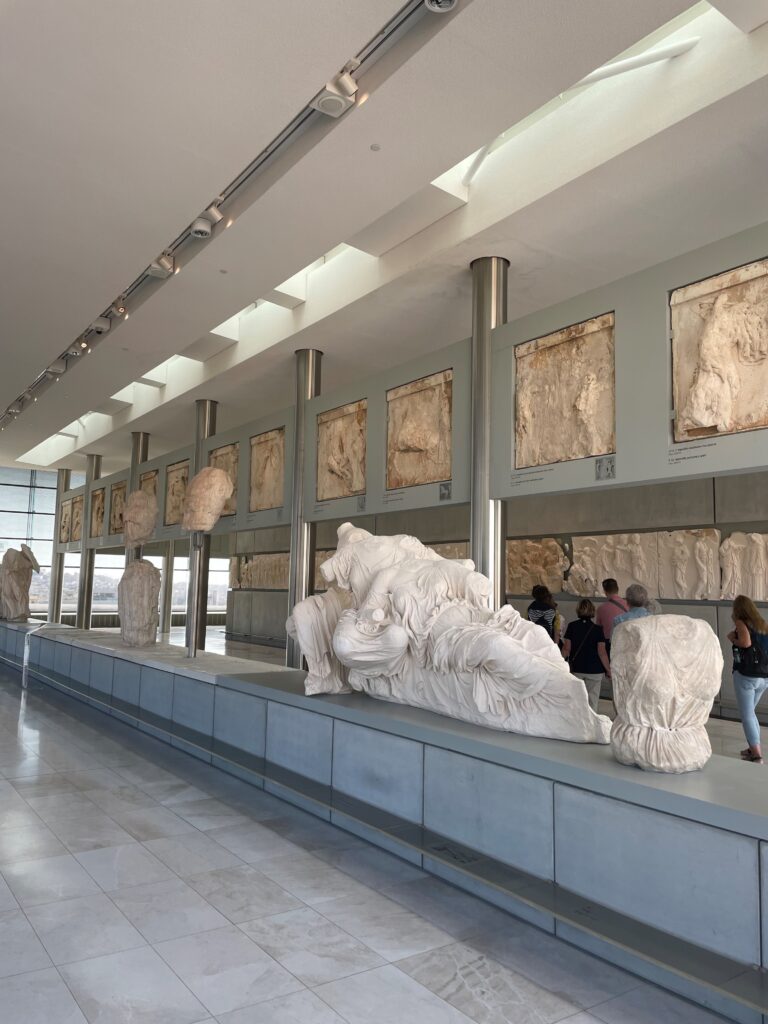
After exploring inside the museum, I visited the archaeological excavation which sits underneath the Acropolis Museum site. The excavation reveals the foundations of an ancient neighbourhood and, accompanied by the Museum of Excavation which opened earlier this year, tells the story of daily life in the shadow of the Acropolis from the 4th millennium BC until the 12th century AD.
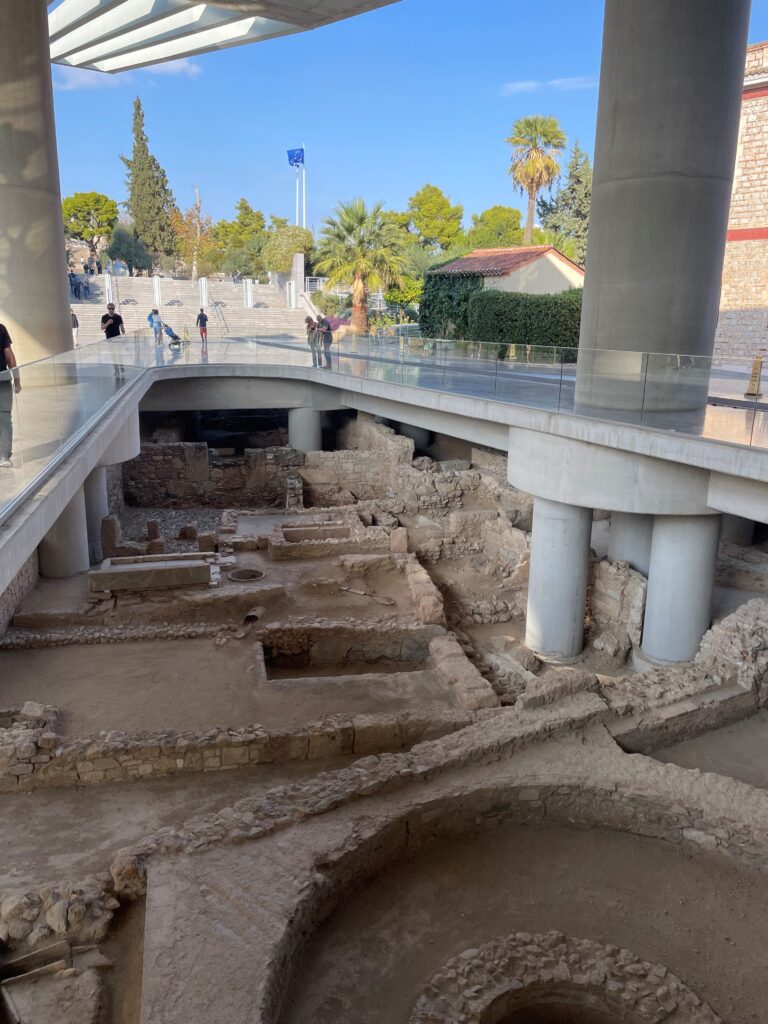
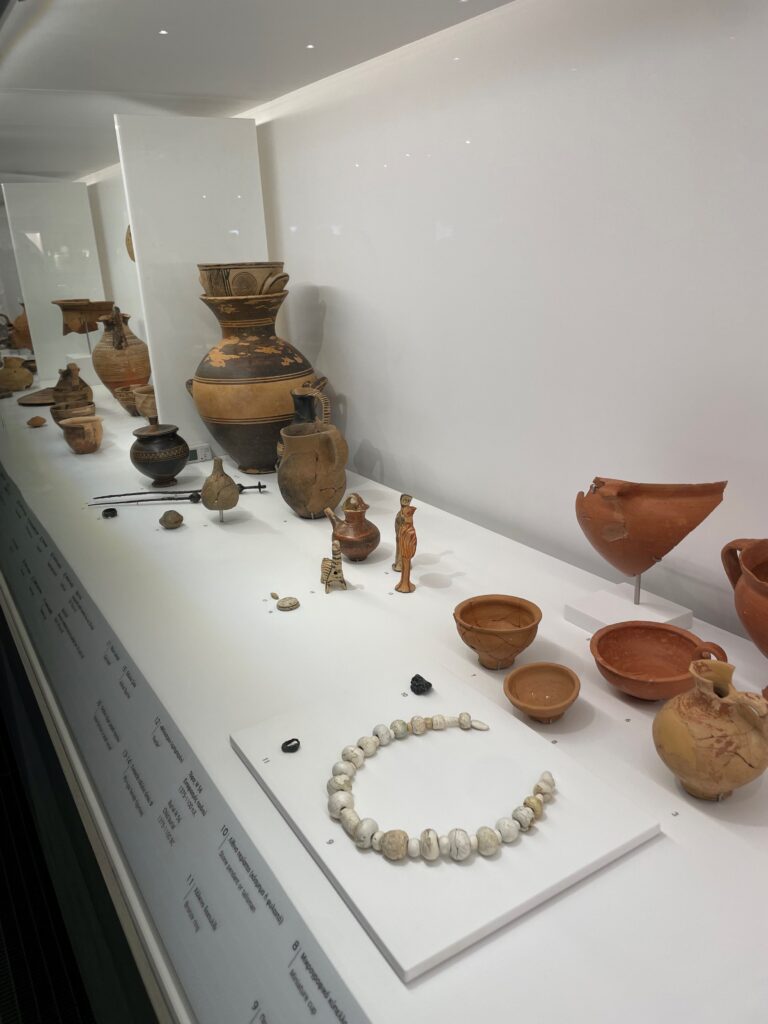
I ended the day with a hike up to the top of the Acropolis to see the iconic Parthenon for myself and take in the outstanding views of Athens. Currently, the Acropolis, which is a UNESCO World Heritage site, is undergoing conservation work in an attempt to slow down the impact of climate change and improve accessibility to the site.
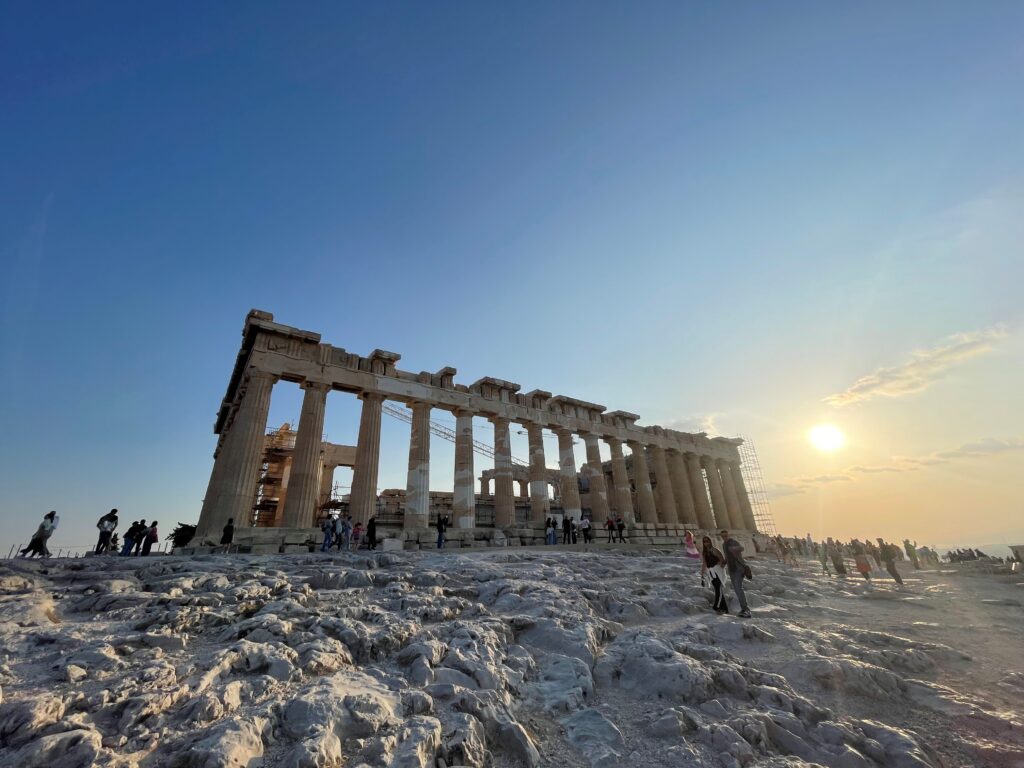
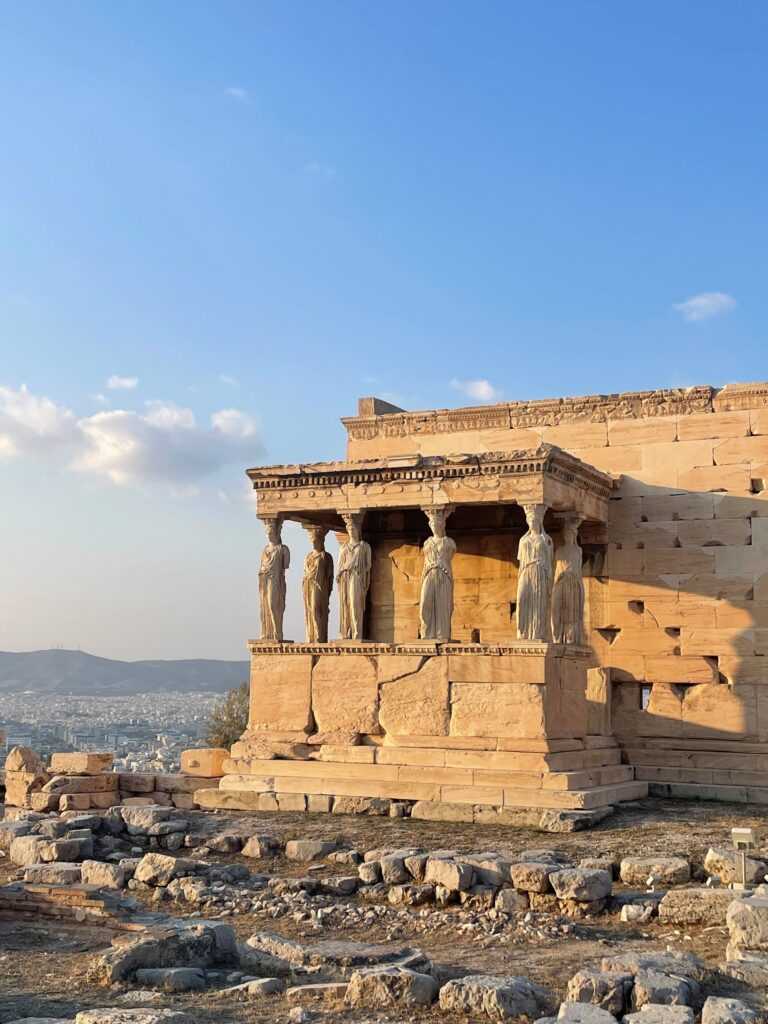
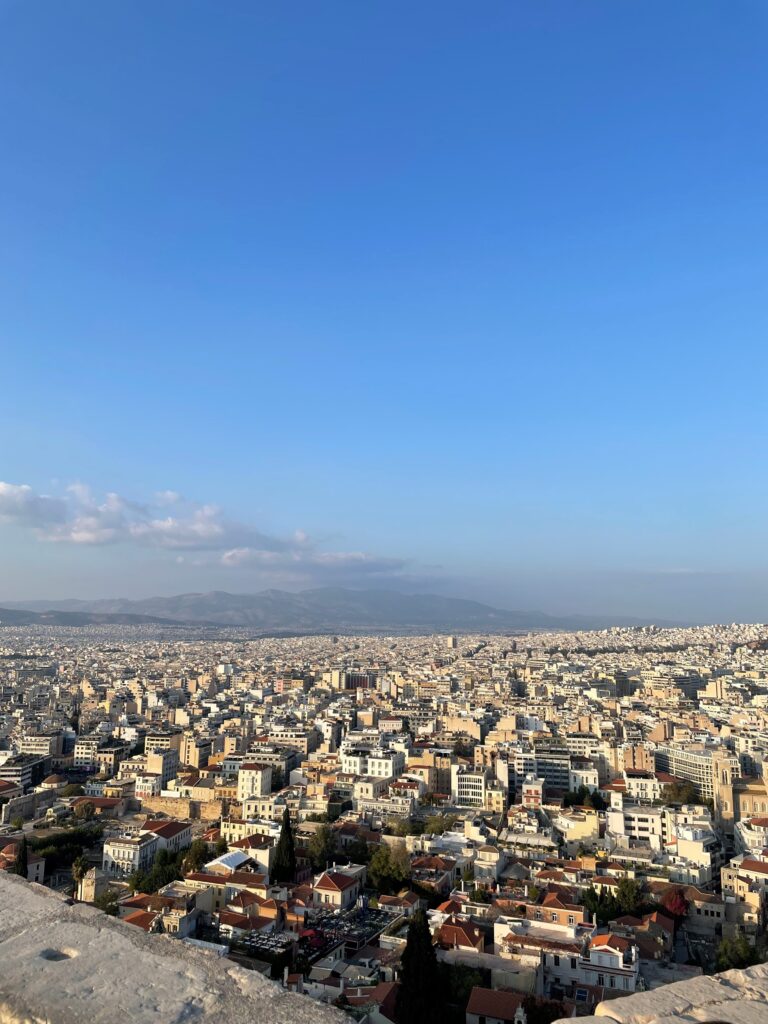
It was a magical experience to stand on a site with so much history, and made my trip to Athens truly unforgettable.
